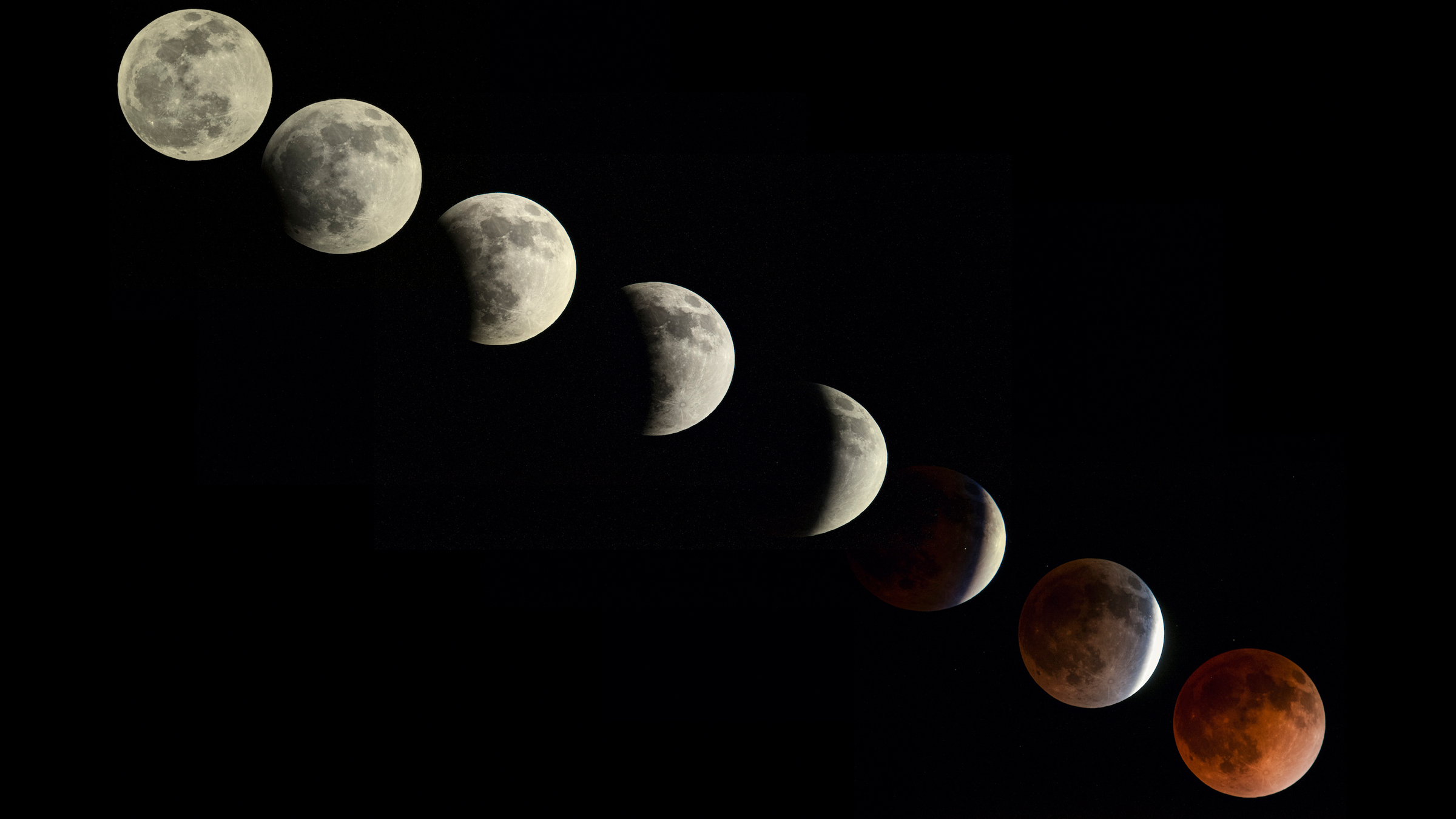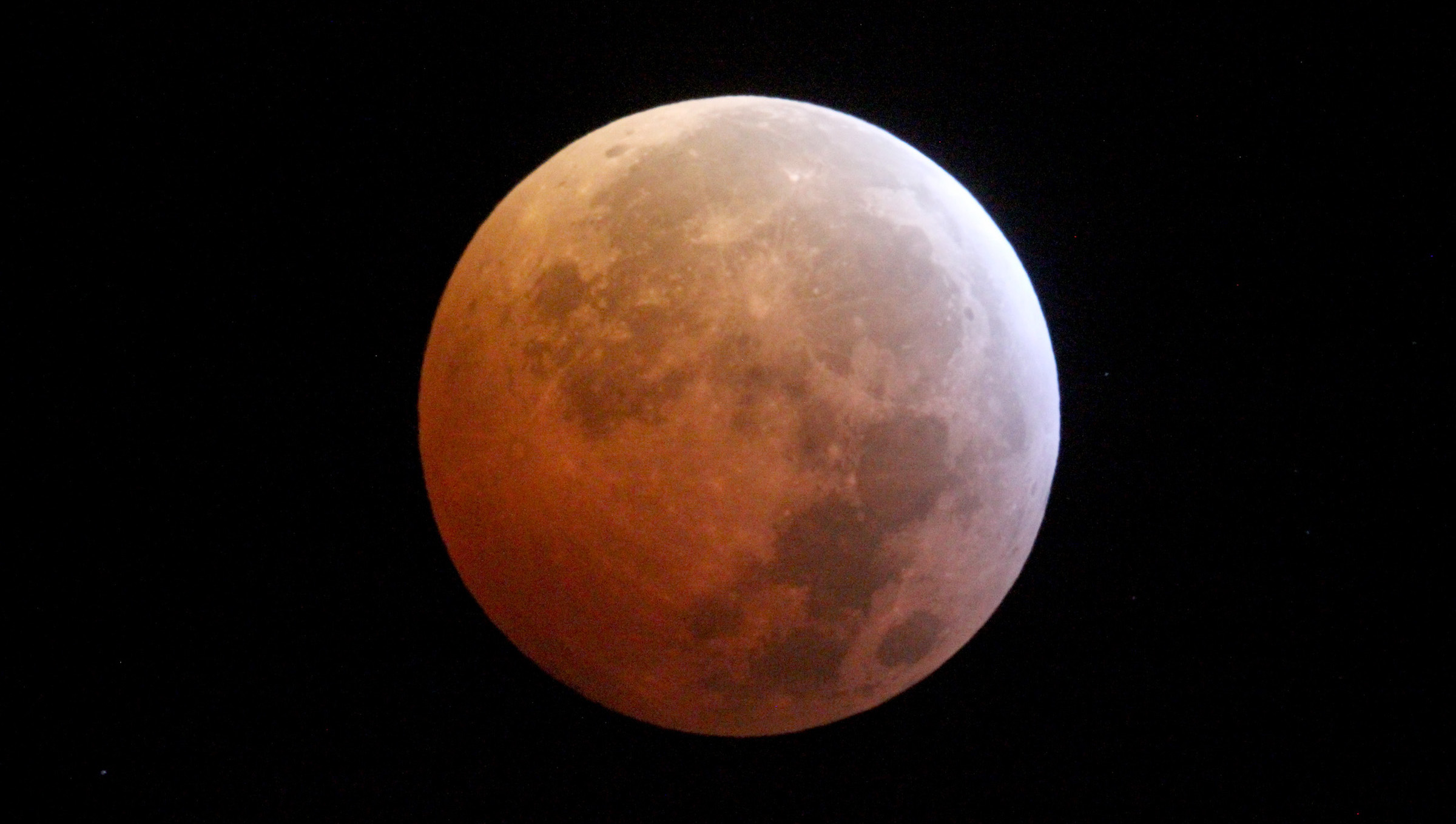How to watch the Super Flower Blood Moon Eclipse online
Catch totality, even if you're far away from it.

Want to see the Super Flower Blood Moon Eclipse, but don't have an ideal viewing spot? Perhaps you're dealing with cloudy weather, or maybe you're located in a place that doesn't fall along the lunar eclipse's path.
Worry not, you can still catch the total lunar eclipse online. Here's a handful of places around the world that are livestreaming it for your viewing pleasure. This way, you can even see totality, when the moon is completely covered by Earth's dark shadow and turns a rusty red.
The entire lunar eclipse — from the point Earth’s shadow creeps across the moon to the moment it leaves — lasts for about five hours, from 4:47 a.m. – 9:49 a.m. EDT on Wednesday (May 26). During that time, as the sun, Earth and moon are perfectly aligned, you can flip back and forth between webcasts, comparing what the eclipse looks like in Western Australia to Los Angeles, and Flagstaff, Arizona, to New Zealand.
Related: Glitzy photos of a supermoon
Unless clouds are in the local forecast, you should at least be able to catch the Flower supermoon, no matter where you are in the world. On May 26, the moon will be at its fullest at 7:14 a.m. EDT (11:14 UTC), but it will appear full for a few days before and after that. The Flower Moon is named after all the wildflowers blooming right now in the Northern Hemisphere, while the supermoon refers to the fact that this will be the closest full moon to Earth in 2021. Supermoons appear up to 14% larger and up to 30% brighter than the average full moon, NASA reported.
If you are in the eclipse's path (the best locations to see the entire eclipse, including totality, are Australia, parts of the western United States, western South America and Southeast Asia, according to timeanddate.com), remember there are three main phases during the lunar eclipse. First, the moon will enter Earth's light shadow, known as the penumbra. However, this phase is hard to see with the naked eye, even with a telescope, as the sun's rays will still reach the moon.
Second, Earth's dark shadow, known as the umbra, will begin to fall on the moon. This phase will be visible to skywatchers along the eclipse's path, and the moon may appear as if it has a giant, circular bite mark on it. Finally, the moon will be completely covered by the umbra, at which point it will turn a rusty red color. This happens because some of the sun's rays bend around Earth and reach the moon. These rays are filtered through Earth's atmosphere, which, just like at sunrise and sunset, lets the long red wavelengths through to hit the moon.
Sign up for the Live Science daily newsletter now
Get the world’s most fascinating discoveries delivered straight to your inbox.
| Eclipse stage | Time: EDT | Time: UTC |
| Penumbral eclipse | 4:47 a.m. – 9:49 a.m. | 08:47 – 13:49 |
| Partial eclipse | 5:44 a.m. – 8:52 a.m. | 09:44 – 12:52 |
| Full eclipse | 7:11 a.m. – 7:25 a.m. | 11:11 – 11:25 |
| Maximum eclipse | 7:18 a.m. | 11:18 |
Griffith Observatory
Tune into the livestream from the Griffith Observatory in Los Angeles. The online broadcast lasts from 1:45 a.m. to 6 a.m. PDT (4:45 a.m. – 10 a.m. EDT) on Wednesday. You can learn more about the broadcast at their homepage. Of note, Griffith's view will likely be stellar, but broadcasts from the middle of the Pacific and parts of Australia are better poised to catch the full visible eclipse, according to NASA's maps of the eclipse.
Lowell Observatory
The Lowell Observatory will broadcast the total lunar eclipse from Flagstaff, Arizona. This livestream lasts from 2:30 a.m. to 4:25 a.m. MDT (4:30 a.m. – 6:25 a.m. EDT) on Wednesday. "Lowell educators will show you live views of the eclipse through our 14" Planewave telescope and wide-view portable Vixen telescopes," observatory staff said in a statement. "Educators will also discuss the science of eclipses, the best ways to view them, Lowell’s history with the moon and much more."
European Space Agency

The European Space Agency (ESA) livestream of the total lunar eclipse will go from 5:30 a.m. to 7:30 a.m. EDT (09:30 – 11:30 UTC), ending just after totality is over. Granted, Europe isn't in the path of the lunar eclipse, so the ESA is taking viewers Down Under. One livestream will be broadcast from Australia's Commonwealth Scientific and Industrial Research Organization (CSIRO), while another will be filmed from the ESA's facility in New Norcia, Western Australia.
Tune in, too, for "Lunch with the Moon," an ESA program with a handful of scientists who will talk about the lunar eclipse. You can watch the livestreams here.
Virtual Telescope Project
Italy won't see the lunar eclipse either, but it will see the Flower supermoon. Astrophysicist Gianluca Masi, who founded the Virtual Telescope Project, will broadcast the supermoon rising over Rome starting at 3 p.m. EDT (19:00 UTC). . Earlier Wednesday, he'll stream live views of the lunar eclipse from around the world, including in Australia, New Zealand and North and South America, starting at 6 a.m. EDT (10:00 UTC).
You can read more about virtual livestreams of the total lunar eclipse at Space.com, a Live Science sister site.
Editor's Note: Live Science would like to publish your Super Flower Blood Moon photos! If you snap an impressive shot of May's full moon and/or lunar eclipse, email us the image at community@livescience.com. Please include your name, location and a few details about your viewing experience that we can share in the caption.
Originally published on Live Science.

Laura is the archaeology and Life's Little Mysteries editor at Live Science. She also reports on general science, including paleontology. Her work has appeared in The New York Times, Scholastic, Popular Science and Spectrum, a site on autism research. She has won multiple awards from the Society of Professional Journalists and the Washington Newspaper Publishers Association for her reporting at a weekly newspaper near Seattle. Laura holds a bachelor's degree in English literature and psychology from Washington University in St. Louis and a master's degree in science writing from NYU.













